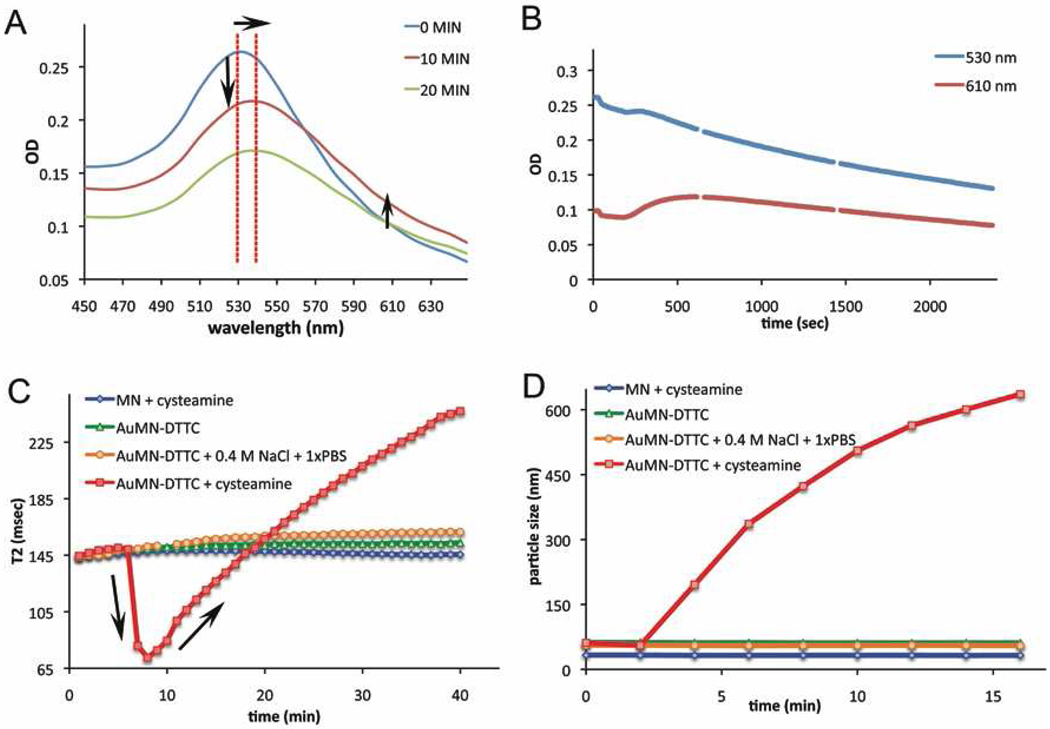Figure 4. UV-Vis absorbance, relaxivity and particle size studies of probe stability in cysteamine and/or 0.4 M NaCl and 1xPBS.
Cysteamine induces aggregation of the probe, which can be detected by UV-Vis absorbance, relaxivity and particle size studies. Relaxivity and particle size measurements indicate that treatment with 0.4 M NaCl and 1xPBS does not induce aggregation, confirming the stability of probe. A) The absorbance spectrum of AuMN-DTTC before and 10 or 20 minutes after addition of cysteamine. Cysteamine induced aggregation of the probe is observed as a red-shift of the 530 nm peak. The horizontal arrow shows the red shift at the 530 nm peak. Vertical arrows show the decrease and increase in the 530 nm and 610 nm reading, respectively. B) Change in absorbance of AuMN-DTTC over time following the addition of cysteamine. The cysteamine-induced aggregation of the nanoparticles is accompanied by a gradual precipitation of the clusters, visible as a decrease in the 530 and 610 nm peaks. C) Change in the T2 relaxation time of a solution of AuMN-DTTC in water, 0.4 M NaCl and 1xPBS, or cysteamine. Cysteamine induces aggregation of the probe, visible as ashortening of the T2 relaxation time. Treatment with 0.4 M NaCl and 1xPBS does not produce a similar effect, confirming the stability of probe. Treatment of MN with cysteamine does not result in T2 shortening, due to the absence of the gold component. D) Particle size change of a solution of AuMN-DTTC in water, 0.4 M NaCl and 1xPBS, or cysteamine. Cysteamine induces aggregation of the probe visible as an increase in nanoparticle size. Treatment with 0.4 M NaCl and 1xPBS does not produce a similar effect, confirming the stability of probe. Treatment of MN with cysteamine does not result in particle aggregation, due to the absence of the gold component.

